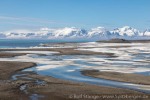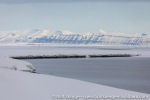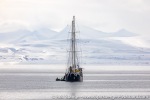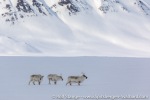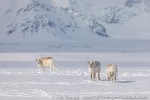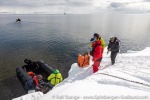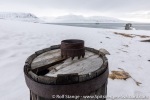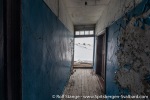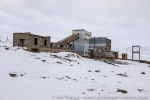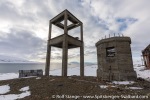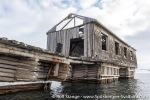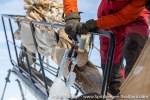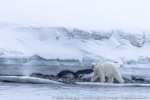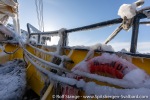-
current
recommendations- Liefdefjord
New page dedicated to one of Spitsbergen's most beautiful fjords. Background information and many photos.
- New Spitsbergen guidebook
The new edition of my Spitsbergen guidebook is out and available now!
- Liefdefjord
New page dedicated to one of Spitsbergen's most beautiful fjords. Background information and many photos.
Page Structure
-
Spitsbergen-News
- Select Month
- April 2025
- March 2025
- February 2025
- January 2025
- December 2024
- November 2024
- October 2024
- September 2024
- August 2024
- July 2024
- June 2024
- May 2024
- April 2024
- March 2024
- February 2024
- January 2024
- December 2023
- November 2023
- October 2023
- September 2023
- August 2023
- July 2023
- June 2023
- May 2023
- April 2023
- March 2023
- February 2023
- January 2023
- December 2022
- November 2022
- October 2022
- September 2022
- August 2022
- July 2022
- June 2022
- May 2022
- April 2022
- March 2022
- February 2022
- January 2022
- December 2021
- November 2021
- October 2021
- September 2021
- August 2021
- July 2021
- June 2021
- May 2021
- April 2021
- March 2021
- February 2021
- January 2021
- December 2020
- November 2020
- October 2020
- September 2020
- August 2020
- July 2020
- June 2020
- May 2020
- April 2020
- March 2020
- February 2020
- January 2020
- December 2019
- November 2019
- October 2019
- September 2019
- August 2019
- July 2019
- June 2019
- May 2019
- April 2019
- March 2019
- February 2019
- January 2019
- December 2018
- November 2018
- October 2018
- September 2018
- August 2018
- July 2018
- June 2018
- May 2018
- April 2018
- March 2018
- February 2018
- January 2018
- December 2017
- November 2017
- October 2017
- September 2017
- August 2017
- July 2017
- June 2017
- May 2017
- April 2017
- March 2017
- February 2017
- January 2017
- December 2016
- November 2016
- October 2016
- September 2016
- August 2016
- July 2016
- June 2016
- May 2016
- April 2016
- March 2016
- February 2016
- January 2016
- December 2015
- November 2015
- October 2015
- September 2015
- August 2015
- July 2015
- June 2015
- May 2015
- April 2015
- March 2015
- February 2015
- January 2015
- December 2014
- November 2014
- October 2014
- September 2014
- August 2014
- July 2014
- June 2014
- May 2014
- April 2014
- March 2014
- February 2014
- January 2014
- December 2013
- November 2013
- October 2013
- September 2013
- August 2013
- July 2013
- June 2013
- May 2013
- April 2013
- March 2013
- February 2013
- January 2013
- December 2012
- November 2012
- October 2012
- September 2012
- August 2012
- July 2012
- June 2012
- May 2012
- April 2012
- March 2012
- February 2012
- January 2012
- December 2011
- November 2011
- October 2011
- September 2011
- August 2011
- May 2011
- April 2011
- March 2011
- February 2011
- January 2011
- December 2010
- November 2010
- September 2010
- August 2010
- July 2010
- June 2010
- May 2010
- April 2010
- March 2010
- February 2010
- November 2009
- October 2009
- August 2009
- July 2009
- June 2009
- May 2009
- April 2009
- March 2009
- February 2009
- January 2009
- December 2008
- November 2008
- October 2008
- August 2008
- July 2008
- June 2008
- May 2008
- April 2008
- March 2008
- February 2008
- April 2000
- Select Month
-
weather information
-
Newsletter

| Guidebook: Spitsbergen-Svalbard |
Home → May, 2022
Monthly Archives: May 2022 − News & Stories
Prins Karls Forland – Fuglehuken – 31st May 2022
Tue
31 May
2022
31st May was still to continue. We still had time and the weather was so good that we didn’t want to miss the opportunity to have a look at Fuglehuken, the northern tip of Prins Karls Forland. It is one of those places that are so exposed to the open sea that you don’t get here often at all It is really a matter of having a very good day. The most beautiful places are often not the easiest one to get to.

But today was the right day. Guillemots and kittiwakes are breeding in large numbers on the steep cliffs high above the tundra, providing sufficient fertilisation to the accordingly rich tundra. There are even thick layers of peat under a surface of mosses and lichens in some places. And part of the tundra is already snow-free, making the reindeer happy that are grazing here in numbers.
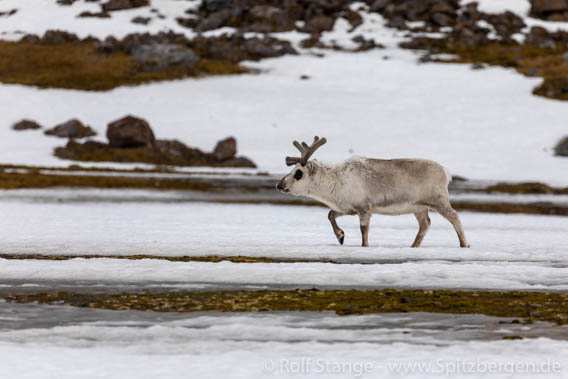
Being able to visit a place like Fuglehuken is really a privilege! I am more than happy to dedicate a blog entry to this very enjoyable event.
Forlandsund – 31st May 2022
Tue
31 May
2022
We had left yesterday’s dense fog behind us. Bright sunshine in Hornbækbukta – what a start into the voyage! Amazing views over the bay, mountains and glacier.
Indeed, Forlandsund is in its best mood today, with an almost mirror-like water surface and a beautiful sky above the jagged, snow-covered mountains and the famous glaciers of Prins Karls Forland.
Gallery – Forlandsund – 31st May 2022
- gallery anchor link: #gallery_2237
Click on thumbnail to open an enlarged version of the specific photo.
Later we dropped the anchor in Engelskbukta for a little late afternoon walk. Just a few kilometres further north than Hornbækbukta, but a couple of weeks back in the seasonal development. A lot of wet snow, a lot of water. Really in the middle of the snow melt.
Longyearbyen & Adventfjord – 30 May 2022
Mon
30 May
2022
Preparations for a sailing ship voyage in the Arctic will never really be just routine. Next to all the packing, trying not to forget anything, carrying stuff around, travelling etc there is always something that doesn’t work and that needs to be repaired or replaced. This time, it was the satellite communication system. It seems to have been successful. If there are no updates in the arctic travel blog here the next days, then it wasn’t …
Gallery – Longyearbyen & Adventfjord – 30 May 2022
- gallery anchor link: #gallery_2234
Click on thumbnail to open an enlarged version of the specific photo.
But now we are moving. We boarded good old SV Antigua this afternoon in glorious sunshine and sailed out into Isfjord and straight into a thick cloud 🙂 so now the world around us is grey and small. Very atmospheric, and it feels a bit adventurous. Hope it doesn’t stay too long, though …
The tourists, of course. Or the Russians?
Beware, this arcticle contains a bad play of words.
The whole thing started in mid May. Everybody who has been in Longyearbyen knows the famous polar bear warning signs that you can find in several places where you can leave Longyearbyen and enter areas where the risk of polar bear encounters increases significantly.

Polar bear warning sign in Adventdalen near Longyearbyen.
The specimen in Adventdalen disappeared at night time in mid May. Such a theft certainly requires a bit of bravado in the midnight sun period next to a road that seems to lead out into the nowhere, but has a surprising amount of traffic at almost any time of day and night these days.
Rumours and speculations were going wild soon: who could have been the thief? Who in Longyearbyen would be so stupid to hang this on the wall in the living room, in a town where really everybody knows these signs?
So, no doubt, the be the bad guy couldn’t be a local. Svalbardposten reported about this criminal case. They found a bus driver who had not seen anything relevant to the case, but the man drives tourists to their destinations pretty much every day, so he must know exactly, of course: “Det er jo turistene som stjeler sånt, sier han.” “It’s the tourist who steal such things, he says.” (quotation Svalbardposten). It is striking: not only did the thought apparently not cross the mind of the journalist that this is a statement that, based on nothing but assumption, deserves some critical questions. No, in the print edition, this actually became the headline of the article, not even marked as a quotation. Yes, of course, these evil and stupid tourists! Who else?

Article in the print edition of Svalbardposten on 19th May:
Headline “It’s the tourist who steal such things”.
The above-linked online version of this article has, by the way, got a new headline in the meantime: “Hvem har stjålet isbjørnskiltet?” (“Who has stolen the polar bear sign?”).
At least, the whole matter came to a rather humouristic end some days later when the sign in question was found again – in the car of Lars Fause, which was parked at the airport.
Lars Fause is the Sysselmester. The governor.
But Fause had been on the mainland during those days, so he can not be the thief. And it appeared anyway unlikely that anyone, let alone someone so experienced with criminal cases (from a police and juridical perspective, that is), would leave the sign, a pretty large item, for days in a car parked publically.
So, who was it then? The solution (and now comes the game of words): the Russians. But not the Russians who are mining coal in Barentsburg (it is actually mainly Ukrainians who are working in the coal mine), let alone those who set the world on fire elsewhere these days: the Norwegian word “russ” means “high school graduate”. Add the definite arcticle, which in Norwegian comes at the end of the substantive, and you get “russen”, which in Norwegian is “the Russian”. Or “the high school graduate”. The context tells you what it is about in any given case. It is obviously the latter. High school graduate in Norway party as much as anywhere else (or maybe even more and harder), and tricks and pranks are part of the game. The theft of the polar bear warning sign was exactly that and nothing else. A successful coup, as most will agree. This includes Sysselmester Fause, by the way.
And we could just smile sadly about the resentmental reflex action to attribute (almost) all the bad and evil things in the world to tourists. It is one thing to utter this over a beer or five or eight in a bar late at night, and it is another thing to say this to a newspaper. And it is yet another thing when a journalists noncritically adopts such a comment and even turns it into a headline. Still, one could just smile mildly if the same mechanism of sentiment wasn’t widely applied these days in much larger and much more relevant discussions, such as the one that may lead to the closure of large parts of the Svalbard archipelago.
Maybe think twice before saying that the thief must have been a tourist.
New levels of hysteria. Comment by Morten Jørgensen
Comment written by Morten Jørgensen, regarding the discussion about polar bears being disturbed by tourists (or not), see this article of the website owner. Comments of other persons do not necessarily need to reflect my (Rolf Stange, the website’s owner) opionion. But on a personal note: I have very high respect for Morten regarding his knowledge of polar bears and conservation and I strongly recommend Morten’s following comment to all reader’s attention.
Norwegian authorities, institutions and scientists harass and endanger polar bears, while the blame is shifted onto tourism and particularly international operators
May 21, 2022 – Morten Jørgensen, conservationist
In Skinboden, in Longyearbyen, you can buy the remains of a shot polar bear. In Bergen, there is a store-room with 100 slaughtered polar bears. Norway is singularly the world’s greatest per capita importer of legal dead polar bear products, and is probably a hub for the laundering of illegal trade as well.
In the one month of April 2022 alone, Norwegian polar bear researchers distressed at least 50 live polar bears in Svalbard (perhaps as many as 20% of the entire local population of bears). These bears were chased by helicopter, shot from the distance with a dart with sedatives, then man-handled in various ways which include blood sampling, biopsy sampling and tooth extraction, then left lying helplessly exposed in the environment until able to recover enough to go about their business again.
I have 25 summer seasons of experience from Svalbard. After 2+ years of not working as a guide due to the pandemic, I was lucky enough to spot my first polar bear of 2022 back in April, when from the ship I was on and through my high-power binoculars I noticed way in the distance a female bear with a cub-of-the-year eating off a reindeer carcass just in from the shoreline above a low cliff. An hour later, she was still relaxed and feeding, while her cub was playing around her, darting in and out of holes in the snow drifts. The ship was perhaps half a mile or more from the scene, while those with very long lenses in the two Zodiacs that were closer but at a respectable distance were able to get somewhat decent shots of the scene. This peaceful and delightful scene was then destroyed by a coast-guard helicopter ‘inspection’. The polar bear mother stiffened already when the helicopter was still far away (she was collared, so had obviously been traumatized before), and as the helicopter flew low over the area, she had already stopped eating. Minutes later, she was scrambling up the hillside, abandoning her meal to go into hiding. In an attempt to prove tourists wrong, authorities (again) broke their own laws.
The above three paragraphs describe the reality of how the official Norway treats polar bears. They are commodities, commercial trade items. They are study subjects that may randomly and excessively be treated as non-sentient objects. And they are a tool seemingly to be exploited for the political agenda of New Norwegian Nationalism, where making Svalbard more Norwegian that the Spitsbergen Treaty actually allows seems to be the driving motivation behind not least the persecution of the tourism industry and especially its international operators.
In an age of fake news and wild conspiracy theories, I shall be careful not to say outright that there is a coordinated attack going on, and that the well-being of polar bears has been taken hostage as a convenient excuse for politicized manipulations. But it sure looks that way.
It looks that way when a journalist from NRK, instead of being fired for lack of sobriety and integrity, gets away with a headline like “Polar bears are disturbed around the clock by tourists” – in a sensationalist article full of speculation, falsehoods and finger-pointing. (editorial note: click here for the NRK article).
It looks that way when the Assistant Governor of Svalbard (‘Sysselmesteren’ in itself being an undemocratic institution where legislative, executive and judicial powers are not separated), can be quoted for saying both that potential law-breaks are still being investigated, but also that it is clear that laws have been broken! Sounds a lot like ‘assumed guilty until proven guilty’.
In looks that way when the organized part of the ship-based tourism industry feels so under attack that its knee-jerk reaction is a cowering defense mode, including the introduction of a policy of self-censorship, because appearances are more important than actions. And when a spokesperson for that same part of the tourism industry, rather than countering the many outrageous claims with a dignified reference to the overall positive track-record of Svalbard tourism, instead stoops to participating in the scapegoating and sowing further division by claiming that some parts of the tourism sector are indeed bad actors, and that it happens to be just those who are not members of the increasingly excessively politically correct, private, lobby organization, from which she draws her salary.
Polar bears are being exploited in so many ways. Let me highlight five of them.
1. Three nation state governments allow commercialized polar bear hunting, calling it cultural recognition, when it de facto is part of the disguising of a continued neo-colonial suppression of local (remote, Arctic) minorities.
2. Norway cashes in on international commercial trading in polar bear body parts.
3. World-wide fake wildlife conservation NGOs use polar bears as icons to collect money, by bemoaning how endangered they are, while simultaneously supporting the continued excessive commercialized hunting of them.
4. Numerous scientists traumatize polar bears repeatedly and excessively to maintain mostly irrelevant studies, careers, and funding.
5. Svalbard tourists take photographs from the decks of small ships or from Zodiacs of polar bears in their environment, in 99% of the cases without chasing them, disturbing them, feeding them, luring them, or putting them in danger.
Which exploitations are benign, and which are offensive? You be the judge. Who is actually disturbing and endangering polar bears? You be the judge. What is the real motivation for this ‘campaign’ against tourism? You be the judge.
While we slowly sink our ship, the fiddlers keep playing.
SAR helicopters with the capacity to locate mobile phones
Safety-relevant information further down in this posting!
The operation of the SAR (search-and-rescue) helicopters in Svalbard is regularly advertised to potential commercial contractors. After Airlift and Lufttransport, CHC Helikopter Service is now following as the operator of the local helicopter base. CHC Helikopter Service is the Norwegian daughter of the Canadian company CHC Helicopter.
The local personel remains unchanged to ensure a frictionless transition. Even during the handover, SAR operations were actually carried out without problems.

SAR helicopter (Super Puma) of the Sysselmannen (now: Sysselmester):
now upgraded with state of the art technology. (archive image, 2015).
Also the two SAR helicopters remain the same machines that have been used by Lufttransport, but they will receive an important technical upgrade, according to Svalbardposten. They will get new, front-facing infrared cameras to “see” missing persons in cold environments, and they will be equipped with technology that can locate mobile telephones – indeed independently of the presence or absence mobile network coverage. This will be a great advantage in Svalbard, which in most of its land and sea areas does not have mobile network.
This, however, requires – and this is the safety-relevant information announced in the beginning of this posting – that the mobile phone in question is turned on and not in flight mode. Then, the phone will send a signal that can be picked up by the helicopter, enabling the crew to locate the device. This is said to work on a distance of up to 35 kilometres, given there are no terrain obstacles blocking the direct line between the phone and the helicopter.
It seems to be necessary the the SAR system knows the mobile phone number, but this is often the case when a person is reported missing by friends or family, who usually have the phone number of their missing friend or relative.
Conclusion: if you are out in the field on your own in Svalbard in a situation where disaster may potentially strike, then leave your mobile phone on and active even when you leave the area covered by mobile network, against up-to-now’s practice which has been to turn the phone off or at least into flight mode to save battery power. And it goes without saying that whenever you are out there, someone in civilisation should know about your whereabouts, your phone number and when to raise the alarm in case you do not return in time.
Polar bears disturbed by tourists “around the clock”?
The first “normal” – without major disturbance by Covid19 – summer season in Spitsbergen has begun. Actually, the winter has just started to loosen its icy grip, the islands are still largely snow-covered, many fjords still frozen and there is currently quite a lot of drift ice on the north and east coasts of Svalbard.
But cruise ships have started trips of several days already weeks ago, and the first ship-based day-trips out of Longyearbyen were offered as early as March. It is not that long ago that the winter season (no ships) lasted until around mid May, then there was a break of several weeks with little activity during the snowmelt and then the summer which involved ship-based activity started in June. But that is history, tour operators are starting earlier and earlier every year, some as early as March.
Now, around mid May, there are already several dozen tourist vessels cruising Spitsbergen’s coastal waters, and there is already trouble although most of them have just started their season. There are photos circulating on social media showing close encounters of polar bears on ice and tourists on ships, and the public discussion is in full swing. The issue is already covered by NRK, Norway’s most important news platform. The headline of the linked-up article claims that Svalbard’s polar bears are disturbed by tourists “around the clock”.

Polar bear on ice close to a ship: who moved to visit the other part? Who was chased, disturbed or even put at risk? Maybe: noone. (Archive image, 2015).
The current discussion is fuelled by photos like this one, showing polar bears and ships with tourists in close distance. There have been situations like that also in recent weeks in Spitsbergen, photos are circulating and the discussion is going high. A reaction may also come from official side: the Sysselmester (governor) has announced to investigate relevant cases.
There is no doubt: violation of valid law, written and unwritten, and unethical behaviour, are inacceptable and should be followed by strictly by the authorities, involving fines wherever appropriate.
Illegal behaviour, unethical action or acceptable behaviour?
But the question is if it is really as easy as that. It seems so: many public commentators including journalists (NRK) take it as given that the polar bears are disturbed by tourists, even “around the clock”. But what does a picture like the one above actually show? The actual picture that has fuelled the current debate has, by the way, been removed from social media posts by the photographer. But it shows – from the perspective of another, not directly involved ship – a situation very similar to the one in the picture above. So, is a situation like this a problem, maybe even legally relevant, or not?
Over the years, I have been in situations like this one a number of times: a ship is parked at the ice edge or between ice floes. A polar bear gets a sense of the ship. Often being a curious and inquisitive animals, chances are that the bear comes closer to inspect the object of his (or her) curiosity. The bear may come close enough to even touch the ship, sniffing on the hull, while the people on board are taking pictures, and then walks his (her) way again. (I highlight “her” because both males and females may show curious and inquisitive behaviour).
It is, of course, hard to say what actually happened in any given case unless you have been there and seen it. Hardly anyone who is contributing to the current discussion has been there. In this given case, I have coincidentally been close enough to see a few bits and pieces (more on that below), but too far to see any details. Generally speaking, a wide range of scenarios is possible: did the people on board to something to attract the bear actively? Did they even feed it? Both is prohibited and completely inacceptable, there is no room for discussion about this. But unless there is any information that points towards such behaviour, there is no no need to assume that anything like that has actually happened: the presence of a ship, not moving, may well be enough to work up a polar bear’s curiosity; after all, being curious is natural behaviour for a polar bear, and this is often reason enough for a polar bear to come close and check out a ship (or hut or tent). This is not at all unusual and it is not condemnable. Neither is it unethical as long as the people on board don’t take any innapropriate action and as long as there is no danger for man or beast (people on board a ship a generally safe – which again means that also the bear is safe – unless the ship is so small that a bear can jump on board; something that would, however, be a very unusual behaviour. I have never heard of a polar bear jumping on a boat with people on deck). Also from a legal viewpoint, there shouldn’t be anything to complain about: §30 of the Svalbard environmental act prohibits any action to “attract polar bears, to feed them, to follow them or to seek out a polar bear actively in such a way that may involve a disturbance of the polar bear or that may put humans or the polar bear at risk” (my own translation). It should not hard to understand that none of these actions – or equivalent ones – need to be involved when a ship stands still and a polar bear decides out of curiosity to come close.
So, is everything fine then?
As mentioned above, of course it is possible to think of scenarios that involve unacceptable and even illegal behaviour. But this appears unlikely in the given recent case, where the ship was parked in the ice. As mentioned above: I was too far to see any details of what people on board were doing, but close enough to notice that the boat in question was not moving for hours. It was not actively moving anywhere.
It is, by the way, not a realistic scenario for a boat to follow a polar bear in dense ice; even at a relaxed pace, a polar bear will be more than fast enough to just walk away unless it is a strong ship that can push or even break ice at speed (breaking ice is, by the way, also generally forbidden).
Snow mobiles on fjord ice may – given unethical behaviour of the driver – be a different thing, but for that reason motorised traffic on fjord ice has been largely banned in relevant fjords already for years. Also fast motor boats in open water may easily be used in ways that can cause great disturbance to polar bears. Unfortunately, we have to assume that not everybody has enough common sense and relevant knowledge to behave appropriately: stopping immediately as soon as the bear shows the slightest sign of feeling uneasy about the presence of boats and moving away carefully without delay when necessary. In such a situation, any further approach that would involve disturbance is forbidden by law as it as been in force since 2001 (Svalbardmiljøloven).
Back to the given case: there is nothing to see or to read in photos and information publically available that points towards such behaviour. NRK journalist Rune N. Andreassen claims that polar bears in Svalbard are disturbed by tourists “around the clock”. His article (link above) does not provide information which would actually indicate this. It appears that the headline supports the same public opinion that it may well be derived from (rather than factual information): the combination of tourists and polar bears is generally bad, and if both are close together, it is just assumed that this is not acceptable and probably illegal.
It is clear that photos like the ones in question that are (were) circulating on social media easily give rise to a heated public discussion, especially when the viewer has never made a similar experience him- or herself, observing the actual event from the beginning to the end. Maybe the authors of articles such as the above-mentioned one on the NRK website have information that I don’t have, but I doubt it. It would be good to have solid information to base one’s opinion on when voicing such a strong statement such as a claim of polar bears being disturbed by tourists “around the clock” (or at all). Especially in nationwide media, but also elsewhere.
And especially when it comes at a time of a heated political debate: Norwegian legislative authorities are currently considering – amongst many other things – a legal requirement to keep a general minimum distance of 500 (five hundred) metres from polar bears under any circumstances.
Rather than letting a polar bear carry on with following his (or her, for that sake) curiosity even if it does not involve any risk or disturbance, this would mean that you would have to start moving your boat or even use deterrents such as a flare gun. Both options are much more likely to disturb the animal than just staying where you are as long as everybody and everything is safe. Something that will generally be the case as long as people are on the ship and the polar bear is on the ice. And this is what we are talking about. Nothing else.
By the way, NRK author Andreassen uses in his article (links above) a photo taken by a Norwegian Polar Institute field biologist, taken “from a proper distance” according to the comment under the photo. I would estimate the distance between the photographer and the two bears in this photo to be somewhere near 50 metres. On tenth of what Norwegian legislative authorities currently are considering as a legally binding minimum distance for polar bear encounters.
National day celebrations without children from Barentsburg
The 17th of May is the Norwegian national day and it is celebrated everywhere in the country with great enthusiasm and a lot of public attention and activities.
In Longyearbyen, this usually includes the tradition to invite representatives from the Russian settlement of Barentsburg, only 40 kilometres away from Longyearbyen. Representatives from the mining company Trust Arcticugol and the consulate came as well as children who met the local children in Longyearbyen.

Representatives from Barentsburg holding speaches next to the Sysselmannen (now: Sysselmester) and the mayor of Longyearbyen on the 17th of May (here in 2019).
It had been made clear in advance that official representatives would not be welcome this year, but the children and “necessary entourage” were invited. Their visit was, however, cancelled by Barentsburg after “internal discussions”, according to Svalbardposten As a consequence, there was no meeting between the neighbours Barentsburg and Longyearbyen in the context of the 17th of May 2022. The original idea that the Russian and Ukrainian children from Barentsburg and the Norwegian and international ones from Longyearbyen would sing together had to be cancelled.
Local officials hope that circumstances allow a normal relation between the neighbouring towns again soon.
Isfjord
Sat
7 May
2022
Again, the snow-covered arctic landscape was glittering in the sun around us as we awoke to another day in Isfjord. Stunning beauty everywhere around us.

Ymerbukta.
Reindeer are roaming in large numbers over the snow-covered tundra. They are looking forward for the snow to disappear soon.

Reindeer at Erdmannodden.
In the afternoon, a strong visual contrast and a bit of regional history followed in shape of the abandoned Russian settlement in Colesbukta, which belonged to the coal mine of Grumantbyen. (Click here for some background information about Russian coal mining in Spitsbergen.)

Colesbukta.
Photo gallery Isfjord
- gallery anchor link: #gallery_2222
Click on thumbnail to open an enlarged version of the specific photo.
Bellsund-Isfjord
Fri
6 May
2022
We started the day in Van Mijenfjord, again with brilliant sunshine. Large parts of the fjord are still frozen solid, and we spent quite some time marvelling at the ice edge.

SV Meander at the ice edge in Van Mijenfjord.
The afternoon brought a lovely passage under sail up north to Isfjord, where we were greeted by a polar bear soon after reaching the anchoring position.

Polar bear in Ymerbukta.
Photo gallery Bellsund-Isfjord
- gallery anchor link: #gallery_2219
Click on thumbnail to open an enlarged version of the specific photo.
Bellsund
Thu
5 May
2022
Oh yes, first came the crossing from Bear Island. Well, we could have done with a bit of wind from another direction – any other direction – than from straight ahead. But we made it up here in the end, and that’s what counts.

Drift ice in the Barents Sea, north of Bear Island.
Beauty all around us as soon as we entered Bellsund. A first landing in the winter landscape near Midterhuken. With polar bear (peaceful and beautiful).

Polar bear in Bellsund.
The fjords are still largely frozen, it is still winter more than anything else. The shoreline is blocked by ice in many places. Beautiful to see, and beautiful playgrounds for small boat cruises.

Meander near Akseløya.
Photo gallery Bellsund
- gallery anchor link: #gallery_2216
Click on thumbnail to open an enlarged version of the specific photo.
02nd May 2022 – Bear Island
Mon
2 May
2022
Bear Island! It took us a while to get here, considering the constant northern winds that we have had in quite a while now.
But on Sunday evening we could see the island from a distance of more than 40 nautical miles!

During the night we found out that large parts of the island are actually surrounded by ice, which is a pretty rare event these days. The bay of Sørhamna where we originally intended to anchor was blocked by ice, so this was not an option and we ended up anchoring at the opposite and of Bear Island, near the northwestern corner.

There, we were able to get out with the dinghy. It was the only place around the whole island where the rather difficult combination of swell, wind and ice allowed small boat operations at all. It turned out to be a little cruise that included a short landing on a beach – for sure not the longest excursion ever on this island, but without any doubt sweet, with the impressive rocky coastline partly covered in ice, glittering in the sun! Stunning!

Later we continued towards Spitsbergen, but the drift ice is further west than expected and it keeps forcing extra miles on us.
News-Listing live generated at 2025/May/01 at 11:22:03 Uhr (GMT+1)

